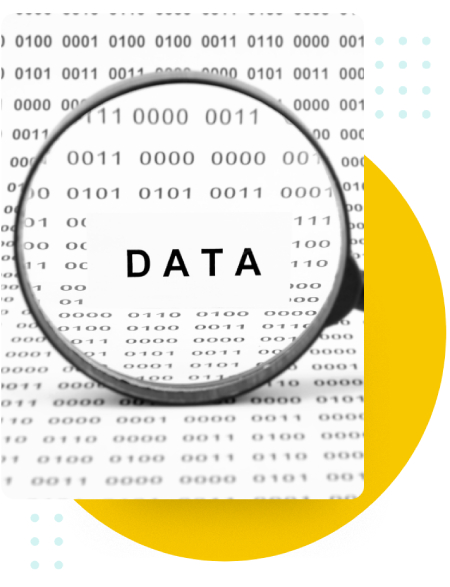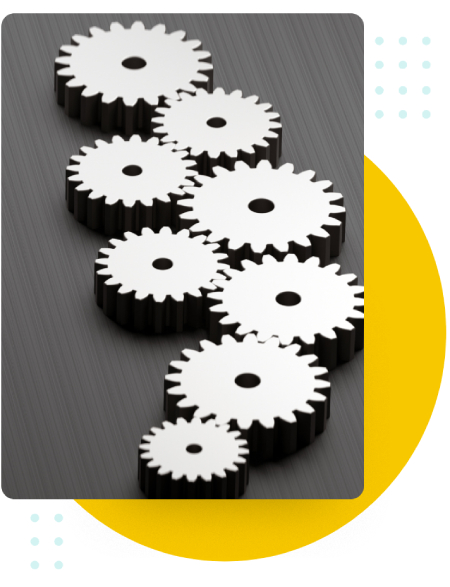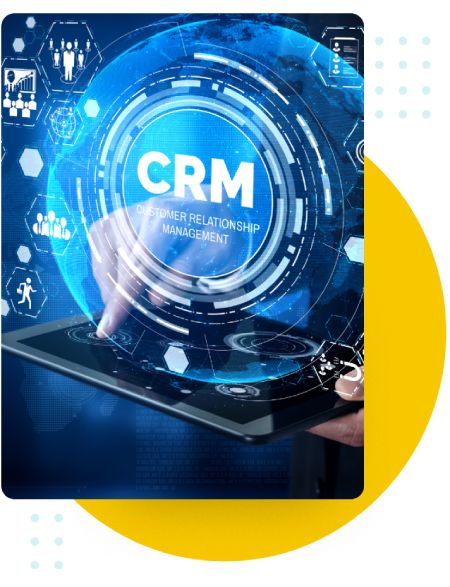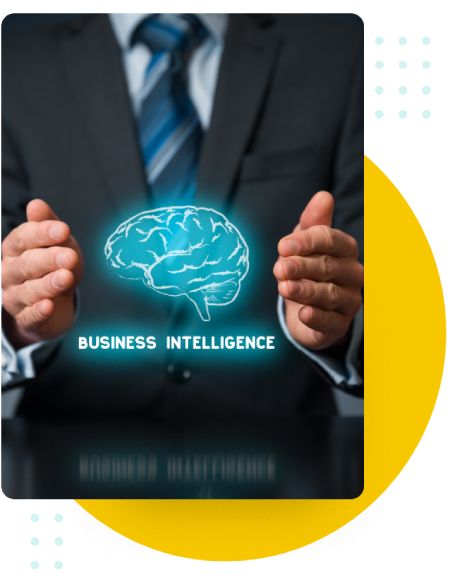Meet Canary7
The Ultimate Guide To ERP Integrations
Reliable, Robust 3PL Solutions; Now at your service.
Reliable, Robust 3PL Solutions; Now at your service.
Reliable, Robust 3PL Solutions; Now at your service.
Succeeding as a business in the 21st century is not easy – it is not only about providing good customer service on one end, but ensuring that the customer is properly looked after throughout the purchasing lifecycle. Customer experience is now simply the most important aspect when it comes to ensuring the success of your business.
When it comes to the logistics side of things, customer experience can only be perfected if each and every aspect of the supply chain is streamlined… which can only happen with the help of ERP integrations.
Not sure what ERP integrations are?
Worry not! This page covers ERP integrations in depth, and will give you an insight into what they are, how they work, and how you can make them a part of your business.
So, without further ado, let’s dive right into it.
Contents:
First things first: what is ERP?
It stands for Enterprise Resource Planning, and refers to specialised software that is aimed towards automating vital functions and tasks for an organisation. In most cases, an ERP collects inputs from different areas of the company, including but not limited to marketing, sales, supply chain, manufacturing, accounting, and logistics. ERP is also responsible for amalgamating all the data generated from these areas and centralising all of it to be managed from one area.
Mostly, people believe that ERP is specifically a software that deals with the financial aspects of a business – “resource planning” sounds a lot like managing money, so it’s understandable. Although ERP does have financial modules involved, its actual role is a lot broader and inclusive of other functions from different areas, such as human resource planning, material requirements planning, supply chain management, omnichannel commerce, customer relationship management, and business intelligence.
Essentially, ERP handles many important tasks including fulfilment and billing, and hence is one of the most effective ways to create a customer experience that is well-rounded and extremely effective. However, in order to ensure that ERP is being used to the best of its ability within your business operations, you must turn towards ERP integrations.
As the name suggests, an ERP integration integrates ERP with other data sources and applications. ERP integrations allow you to use the helpful features of different software in tandem, and in turn boost your productivity to the fullest. You get unified access to information from all these systems, and that too in real time.
An ERP integration is the ultimate way to boost the efficiency of all the important day-to-day tasks you are entrusted to master along the way. It brings collaboration to the centre of your operations, and ensures that your efforts are being dispersed equally amongst the different aspects of your business.
As mentioned earlier, ERP integrations are the undisputed gateway to efficiency and productivity. However, ERP integrations help businesses in many other ways, such as:

If not fixed on time, data silos can act as a serious hindrance to the way your company operates. Think of a data silo as an isolated bundle of data that is not shared with the majority of the company, and is instead handled by just one unit. This is usually due to the fact that the data in a data silo is incompatible with other data sets – which, in simple terms, means that the data you generate in one system cannot be used in other systems, and you have to take advantage of their features in isolation from each other.
Needless to say, data silos become problematic at one point because they severely limit the ability of organisations to benefit from the data they generate in the best and most useful way possible. Without accessing relevant data from all areas of your business, you cannot possibly make informed business decisions which can result in losses and overall difficulties for the growth of your business.
Because the ultimate purpose of ERP integrations is to connect different data sets with each other, they are the ultimate cure for data silos. Where data silos cause inefficiency and in accurate data, ERP integrations come into the picture and reverse these aspects of the business, and making it easier for business to not only generate data from different areas of the business, but also ensure that this data is interconnect and easily accessible for all the key players of the organisation.
If you are working towards the success of your business, speed is the one factor you simply can’t ignore. However, speed is a distant dream when you are relying on manual processes. If you take customer service as an example, handling the different needs and wants of your clients can quickly become problematic if you are doing it manually. Not only is it an unreasonable burden to put on your labour force, but it is also unnecessarily time-consuming, and of course, we all know that time is money.
If you incorporate ERP integrations into your day-to-day processes, your job becomes dramatically easier and more simplistic. All your customer-related tasks will be taken over by a customer relationship management (CRM) software, which means that you won’t have to put in a manual effort to get everything sorted, which is a good thing because in most cases, manual effort goes to waste and is simply not enough for businesses that are looking to expand properly.


Data is what makes the world go round in the 21st century. You can simply not hope to move forward with your business unless you are equipped with accurate, real-time data. Yet, that is something that cannot be achieved if your data sets are scattered all over the place, and you are working with disconnected systems that aren’t really meant to exchange information with each other. Needless to say, this will lead to delays that can eventually manifest into bigger problems for your business. For example, if the logistics and sales teams fail to connect with each other and exchange relevant information, there can be gaps in the order processing; the sales team wouldn’t know which items are available in the inventory, and the logistics team wouldn’t be able to gauge the volume of all the orders they get.
With the help of ERP integrations, gathering accurate, real-time data is a piece of cake. It unifies all the different elements of your business, and hence makes it easier for you to get information from multiple sources in real-time and put them together in a way that is particularly useful to the trajectory of your business. For this reason, ERP integrations are a must-have for companies that are looking to utilise their data in an effective manner.
Creating a customer experience that sells is not a straightforward job – you have to put on multiple hats, and make sure that there is a range of boxes you are checking off with your tasks. So, for example, you will have to connect product, fulfilment, and financial modules to ensure that you are coming up with the best schemes and discounts for your customers. These initiatives, in turn, will help you build rapport with your customers and convey your credibility to them.
ERP integrations make it easier for you to do this as well. You can get a centralised, integrated outlook on your customers as well as their preferences, and then connect all of that with different elements which will help you come up with a customer management strategy that can actually help you achieve your goals in terms of handling customers and working towards increasing customer retention.
Ultimately, ERP integrations provide the perfect cohesion for your business. With the help of ERP integrations, you can make sure that not just one aspect of your business but all the areas within it are getting the attention they deserve, and that they are all operating in a way that actually contributes towards the profitability of your business.

Now that we know what ERP integrations are, it would be useful to dive into the different types of ERP integrations. A key thing to remember is that there are many types of ERP integrations – probably way too many to get into in-depth. This is mainly because these are often meant to align with hundreds of different needs of an organisation; hence the vast volume of integrations available.
Yet, there are some ERP integrations that are a huge part of any organisation, and without these, the ERP setup of any business would be more or less incomplete.

Customer relationship management, of course, is an integral component of the whole customer experience. This means that CRM ERP integrations are very important. They are meant to improve the service you provide, and make it more customer aligned. If you have the right ERP integrations in your belt, you can actually gain competitive advantage over others in the industry. They are very important in terms of gaining consumer insights, and can help you make the decisions that your business actually needs. ERP integrations that are focused on customer management will help you raise customer satisfaction levels, improve customer retention, and even streamline marketing and sales processes in accordance with the data you gain on your customers.
Business intelligence tools are a must in the 21st century. If you don’t invest in a sufficient BI set up, you are setting your business up for nothing but downfall. The purpose of BI ERP integrations is to collect and analyse internal data, and hence allow you and your team to make some meaningful changes in accordance with this data. With the help of BI ERP integrations, you can therefore improve internal processes to a great extent. The insights that your team needs to ensure that they are actually working towards long-term success is readily available with the help of business intelligence tools and ERP integrations.


Managing your labour force is no walk in the park – in fact, human resources is perhaps one of the most complicated aspects of any business, and you need to go the extra mile to ensure that everything is streamlined in this area. With the help of ERP integrations and integration systems, this is possible to. HR ERP integrations will help you manage your employees in just a few clicks – whether it is documentation, training, or onboarding, all aspects of human resources can be handled with HR ERP integrations.
Each project is different and has its own unique needs, which is why project management is a necessary element of the overall management of your business. ERP platforms that come with project management integrations allow you to do this. With the help of these, you can collect data from different systems and use it for specific projects. Not only that, but all the projects, regardless of what area they are focused on, can be executed using one database, which means that you don’t have to put in a monumental amount of hard work and effort to streamline everything to create the right balance between different projects.


With the boost of eCommerce activity all over the world, eCommerce ERP integrations are becoming important. ERP integrations allow you to connect the back-end of your business with eCommerce platforms, and ensure that there is a cohesive workflow between logistics and eCommerce activity. Essentially, with the help of ERP integrations, you can make sure that all incoming orders are checked properly and the stock levels are monitored throughout. This will play a huge part in eradicating major problems such as stock outs, back orders, and many other issues that lead to unnecessarily increasing inventory costs for your business.
Accounting ERP integrations are also a quite prominent form of ERP integrations. These help you handle the financial aspects of your business, and are important because they can keep a record of all your money-related transactions. With accounting ERP integrations, it becomes easier to navigate the challenges associated with the financial management of a company.
Remember; this list is not exhaustive. There are many other forms of ERP integrations, and the ones your business needs are entirely dependent on the needs of your business. If you consider yourself to be struggling with the financial end, then accounting ERP integrations such a SAGE or Xero, should be your priority. On the other hand, if you are worried about retaining customers, then the focus should be on customer relationship management ERP integrations. The key is to understand the various needs of your business and work from there.

Let’s get a little deeper into the benefits ERP integrations provide you with. The first one, as discussed earlier, is that they result in considerably greater efficiencies across the business. Without ERP integrations, everything would have to be managed manually, which is a hassle in itself, having the huge potential of causing bottlenecks in your order processing. This will not only slow down important aspects of your business, but will also seriously dent your business as a whole because inefficiency and delays are not something that sit well with customers.
Another benefit provided by ERP integrations is a personalised customer experience. In today’s day and age, your customers expect a completely personalised customer experience, to the point that with an absence of personalisation your customers will feel like you don’t care about them at all. With the help of ERP integrations, personalising the customer experience is easier. This is because you have just the kind of data you need to make improvements to the experience you provide your customers with. ERP integrations allow you to single handedly create dynamic customer profiles that incorporate useful online and offline information, as well as information from third parties. You’ll see how this can actually greatly impact your business, and make the right changes to your workflow.
ERP integrations also allow you to optimise the value chain in a much better way. Ideally, data should be used efficiently throughout the company’s value chain, which is exactly what ERP integrations allow you to do. You get a holistic outlook of customer data, which in turn enables you to predict customer demand and make adjustable changes to your business, allowing you to create a venture that is actually profitable on every end.
Automation is another huge advantage that ERP provides you with. If your processes are still manual, you are considerably lagging behind with your business activity and need to make some important changes as soon as possible. If your business is properly automated from start to finish, you will not only be speeding up all your tasks but also ensuring that there are considerably less mistakes taking place with these processes, which will help you save both time and money. Not only that, but automation also leads to faster return on investment, so technically ERP integrations can also help you improve your ROI and expand your profits.
In order to take full advantage of ERP integrations, you must be aware of the different ERP integration methods that can be employed to ensure that the ERP system is fully integrated and acts as a contributive part of your business.
There are a range of different approaches that can be considered for this, including but not limited to:
This method of integration refers to the use of custom code which then works to connect two applications between each other. It is also known as P2P, and can be written as code with the help of several technologies. Often, point to point integration will involve the use of various coding languages, and can create a whole network that can be utilised.
Although mostly P2P integration is considered to not be the ideal method of ERP integrations, there are some situations where using it would make sense. For example, the fact that it is easier to implement and maintain means that it doesn’t need a lot of effort from you or your team to kick start and get going. In addition, P2P means that you only have to build one integration, and therefore it’s considerably more manageable and there is not much expertise needed. Lastly, point-to-point integration can also be a helpful lever of growth, and if used properly it can help your ERP setup flourish.
However, there are certain aspects that make it disadvantageous. It requires a lot of time to perfect, and implementing it, although easy, is not always a quick process. It is also an intricate process in the sense that the development has to be in close communication with the stakeholders and other key players in your organisation, which can make the process even longer. Not only that, but P2P integration is also not scalable, or future-proof. For example, as a big organisation, especially one that deals with logistics, you are likely to have a large number of apps. Using P2P for all of these apps is not feasible, since you can’t create point to point integration across all these apps.
Moreover, P2P means that you are depending for the success of your ERP system on just a handful of employees, which some would argue is not the best approach if you are looking to employ agile methodology for your integrations. P2P integration is also difficult to track and maintain over time.
So, to sum it all up:
Pros:
Cons:
Native integration refers to the ERP integration method that involves applications connecting with one another themselves automatically with the help of their APIs. Essentially, this means that the applications in use provide a direct route of integration with other interfaces. Once they integrate with the other APIs, data can flow between the apps and become more readily available to be used by you and your team members. Think of native integration as the marriage between two apps in a way that enhances the productivity of both.
Needless to say, there are quite a few benefits that native integration brings to the table. Firstly, it is a much more affordable option than the other methods we will discuss on this list. If you’re investing in an enterprise-grade software that comes with integrations, then there is a very high chance that you will be able to enjoy your ERP integrations at considerably lower rates. Furthermore, native integration comes with customer support, because ERP integrations are connected with larger platforms that have a team of experts at your disposal to help you navigate these issues.
However, this doesn’t mean that this method of ERP integrations has no drawbacks – it does! It comes with limitations, because most platforms that offer native integrations offer a limited number of them. This limitation can lead to data silos, which means that it can be counter-productive to the very aim of ERP integrations. Also, as with P2P ERP integrations, native integration is not always scalable. As your business grows, you may find that the native ERP integrations are struggling to manage the flow of data and exchange of information, which will further cause a dent in your overall business strategy.
Also, many businesses mistake native integrations to be the sole way to drive digital transformation. This is a misinformed notion – although native integrations can boost your digital presence, they are simply not the only thing that counts, so too much reliance on them without putting in the due effort needed to actually give way to a full digital transformation is not the best option.
So, to sum up:
Pros:
Cons:
This is the method of ERP integration that relies on ESB architecture. ESB architecture is basically a system that allows different apps and software to communicate with each other and share data via a middle layer, commonly referred to as the communication bus. The bus is middle ware that enables data to be dispersed between different applications, and it is essentially the main factor that draws distinction between an ESB and other forms of ERP integration methodology.
The biggest benefit associated with the use of ESB software is that it provides a single point of access. This is because most of the integration work is actually executed on the “bus,” which means that there is one place that needs the attention of your team. Not only that, but ESB integrations simplify communication to a great extent. This means that they handle multiple protocols in different applications, and there is a greater degree of organisation between the services.
However, there are also some drawbacks of using ESB. For example, ESB ERP integrations can result in bottlenecks. Because they demand upgrades and modifications in order to function properly, in the absence of these, the ESB will not work as efficiently as one would perhaps want them to. Secondly, simply setting up ESB requires a team of experienced developers, which of course means a larger investment as well as more time, as even experts will require a good amount of time to ensure that everything is working well. However, even if you do all this, there is always a chance that the bus can break down. This means that it can malfunction: you may witness it skip certain parts of the process, take too much time, or even experience failures in terms of initiating processes. Since the bus is the main component of an ESB system, you must address these issues every single time they arise or the whole system collapses. This is especially true if you are using cloud applications.
Here are the pros and cons of this method summed up for you:
Pros:
Cons:
Also known as iPaaS, this method of integration refers to when a third party, cloud-based platform provides a centralised way of integration for all your apps as well as on-premise systems. It allows an organisation to establish integrations between applications, processes, and data.
iPaaS really helps businesses save a significant amount of time. Instead of hopping between applications to get the job done, you can access all the necessary details on a single platform. This means that you can get done your tasks done a lot more easily and quickly, without having to put up with delays. Not only that, but iPaaS also allows you to move data in real time. This means you and your employees get just the right kind of visibility needed to successfully engage specific activities. However, the best part about iPaaS is that it protects your data and makes sure that you are compliant with major security policies, in turn simplifying the whole process to a great extent.
In addition, it must also be noted that iPaaS has great potential to prevent human errors, improve customer satisfaction, and also keep your employees happy by streamlining processes to a great extent. You can spot and fix issues quite fast too!
However, even this ERP integration related method has its flaws. It too lacks scalability, because technical background is necessary to use traditional iPaaS, considering that it is not very straightforward. This means that although your IT and engineering teams can benefit with iPaaS, however Marketing, Sales, Finance, Support, and Product teams may not be able to work through this particular method of ERP integration. It can also not automate workflows, which means that it puts teams who rely on it as a disadvantage. Automation is a huge factor, and not automating processes is not the right thing if you are thinking of expanding your business.
The pros and cons of this, then, are as such:
Pros:
Cons:
ERP integrations are an important aspect of a business set up, especially if you are planning to make strides in your industry and leave your competitors biting the dust. By providing top ERP integrations, Canary7 simplifies the logistics journey for you. .
Enter your details to book a demo of the Canary7 WMS, built for 3PLs, and fulfillment houses.
Enter your details to book a demo of the Canary7 WMS, built for 3PLs, fulfillment houses, and online retailers.
You can see how this popup was set up in our step-by-step guide: https://wppopupmaker.com/guides/auto-opening-announcement-popups/
You can see how this popup was set up in our step-by-step guide: https://wppopupmaker.com/guides/auto-opening-announcement-popups/